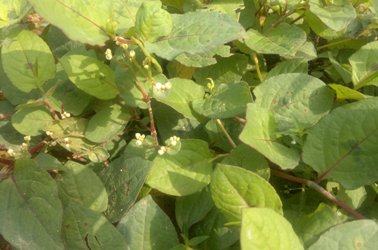
THE STAR ONLINE NEWS: Hopes pinned on him Not only does he dispense herbs and practise acupuncture, but Leong teaches patients qi gong, advises them on dieting and offers emotional therapy. People mostly come in for fertility problems, slip discs and backaches...read |
|
|
Diabetes Treatment - Email HERE!
|
WHAT IS DIABETES MELLITUS?
Diabetes mellitus is a metabolic disorder characterized by hyperglycemia (high glucose blood sugar), among other signs. The World Health Organization recognizes three main forms of diabetes: type 1, type 2 and gestational diabetes (or type 3, occurring during pregnancy) , although these share signs and symptoms but have different causes and population distributions. They are not a single disease or condition. Type 1 is generally due to autoimmune destruction of the insulin-producing cells — pancreatic beta cells — while type 2 is characterized by tissue wide insulin resistance and varies widely. Gestational diabetes is due to a poorly understood interaction between fetal needs and maternal metabolic controls. Type 2 sometimes progresses to loss of beta cell function as well.
Since the first use of insulin (1921) Types 1 and 2 have been incurable, but treatable chronic conditions; gestational diabetes typically resolves with delivery. Aside from acute glucose levels abnormalities, the main risks to health are the characteristic long-term complications. These include cardiovascular disease (doubled risk), chronic renal failure (the main cause of dialysis in developed world adults), retinal damage (which can lead to blindness and is the most significant cause of adult blindness in the non-elderly in the developed world), nerve damage (of several kinds), microvascular damage (including erectile dysfunction (impotence) and poor healing which can lead to gangrene and even amputation- the leading cause of non-traumatic amputation in developed world adults).
CLINICAL DIAGNOSIS
1. The characteristics of a typical case of diabetes mellitus are often polyphagia, polydipsia, polyuria and loss of body weight. Early or asymptomatic patients only show abnormal release of cortical hormone and insuline inside the body. The level of fasting blood sugar is elevated with abnormal glucose tolerance test. Symptomatic patients are frequently complicated by other symptoms of dermal, neural and endocrinous disorders, besides polyphogia, polyuria and loss of body weight.
2. The main complications and concomitant diseases of diabetes mellitus are diabetic ketoacidosis, cardiovascular diseases, diabetic renopathy and peripheral neuropathy. Cardiovascular complications are the chief causes of death.
3. Diabetes mellitus is classified into juvenile and adult types according to the clinical features. The age of onset of the juvenile type is young and has a tendency to inheritance. Blood sugar fluctuates widely and is quite sensitive to insulin. Threatment is difficult and it is often named insulin-depending diabetes or unstable diabetes. The age of onset of adult type is above 40. This type is relatively mild and can be controlled by dietary restriction or oral antidiabetics. Therefore it is also named non- insulin depending diabetes or stable diabetes.
4. Accessory examination
a) Fasting blood-glucose is higher than 130 mg. Blood glucose after meal is more than 160-180 mg. Urine is positive for glucose. If complicated by ketosis, urine is positive for ketone bodies.
b) Glucose tolerance test can be used to diagnose early or suspected cases and is the principle test in diagnosis.
c) New diagnostic techniques such as testing blood insulin levels are quite helpful in understanding the pathological changes of pancreas and in obtaining information concerning treatment.
TYPES OF SYNDROMES
1. Dryness-heat in the Lung and Stomach Main Symptoms : Restlessness, polydipsia, polyphagia with tendency to hunger, dryness of the mouth and tongue, polyuria, red tongue with yellowish fur, slippery and rapid pulse.
2. Deficiency of the Kidney Main Symptoms : Polyuria with turbid discharge, soreness and debility of the lumbus, dryness of the mouth and tongue, dyshopria with feverish sensation in the chest, palms and soles, red tongue, deep, thready and rapid pulse.
TREATMENTS
Usually it takes between 1 to 6 months for recovery by Chinese Master's theory of medication. The treatment includes acupuncture herbal medicine qi qong exercise and dieting therapy, etc etc.
ACUPUNCTURE AND HERBAL TREATMENT |
Acupuncture and Herbal Treatment
Hyperactive Behaviour Kids Treatment
OTHERS TREATMENT SITE |

